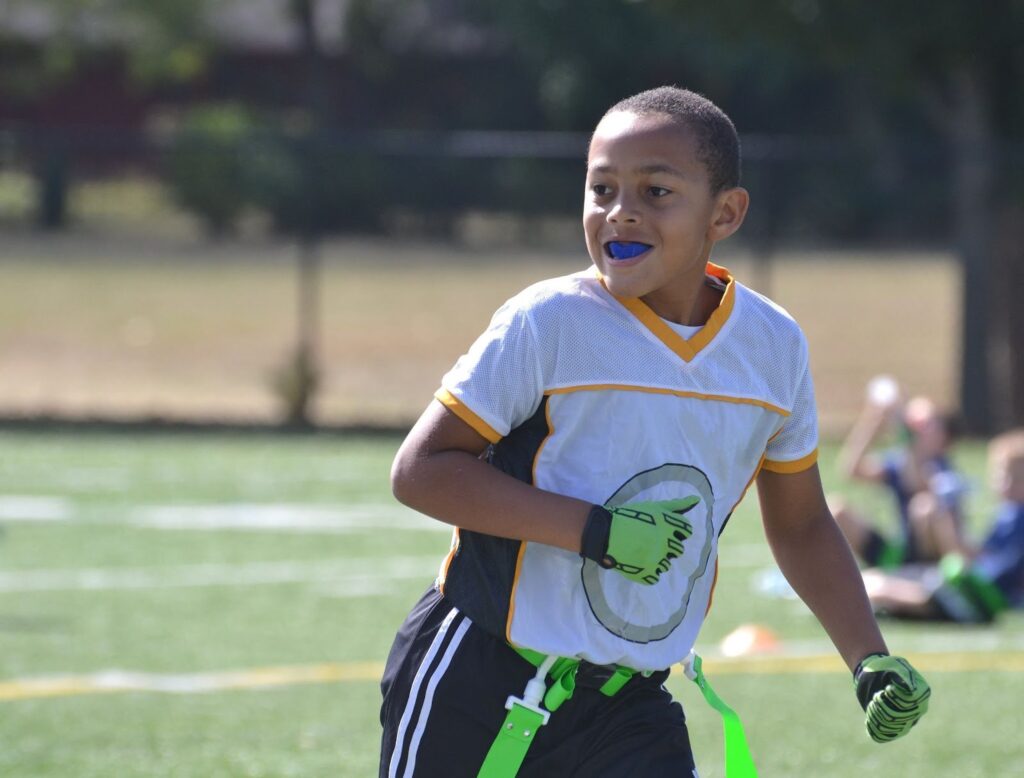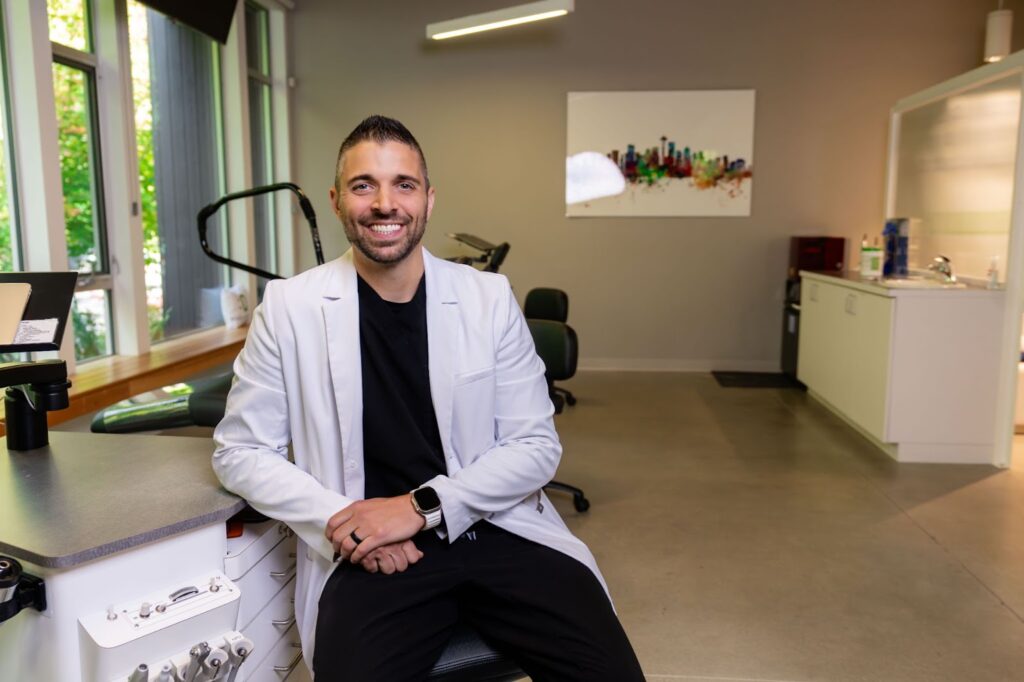Getting braces doesn’t mean you have to sit on the sidelines. If you’re an athlete in Issaquah dealing with orthodontic treatment, you’re probably wondering how to keep playing the sports you love without damaging your brackets and wires. Dr. Dudley at Dudley Smiles sees plenty of student athletes who need to balance their orthodontic care with their athletic commitments, and when you protect braces during sports, you can do both.
Why Athletes with Braces Need Extra Protection
Playing sports with braces puts you at a higher risk for certain injuries. A ball to the face or an elbow during a rebound can cause serious damage to your brackets, wires, and the soft tissues in your mouth. The metal components can cut into your lips, cheeks, and gums during impact, turning what would have been a minor bump into a painful injury requiring emergency orthodontic care.
Beyond the immediate pain and inconvenience, damaging your braces can extend your treatment time. Every broken bracket or bent wire potentially sets back your progress, meaning you’ll be wearing those braces even longer than originally planned. That’s why taking protective measures before you hit the field, court, or mat makes sense for both your comfort and your wallet.
Essential Gear to Protect Braces During Sports
The single most important piece of equipment for any athlete with braces is a quality mouthguard. Before you grab just any mouthguard off the shelf, there are some key factors to consider:
- Look specifically for orthodontic mouthguards designed to fit over braces
- Expect to pay more for better protection; those $5 options won’t cut it
- Consider the level of contact in your sport when choosing thickness and coverage
A properly fitted mouthguard creates a protective barrier between your braces and the soft tissues of your mouth while also cushioning against impacts that could damage the orthodontic hardware itself.
Sports-Specific Considerations
Different sports come with different risks, and your protection strategy should match the level of contact you’ll face. Here’s what you need to know based on your specific athletic activities.
High-Contact Sports
Football, wrestling, hockey, and lacrosse players need maximum protection. These sports involve frequent collisions and direct contact, making a heavy-duty orthodontic mouthguard non-negotiable. Some athletes in these sports also benefit from additional face protection like cages or shields when regulations allow.
Medium-Contact Sports
Basketball, soccer, and baseball might not seem as risky, but Dr. Dudley and the team at Dudley Smiles have seen plenty of orthodontic emergencies from these activities. Flying elbows on the basketball court, headers gone wrong in soccer, and line drives in baseball all pose real threats to your braces. A standard orthodontic mouthguard provides adequate protection for most situations in these sports.
Low-Contact Sports
Even in sports like volleyball, tennis, or track and field, accidents happen. While you might not need to wear a mouthguard during every practice, having one available for intense drills or competitions is smart. Better to have it and not need it than to end up with a dental emergency.

Proper Mouthguard Care and Maintenance
Your mouthguard works hard to protect your teeth and braces, so you need to take care of it properly. After each use, rinse it with cool water and brush it gently with a toothbrush. Hot water can warp the material, so stick to cool or lukewarm temperatures. Once a week, give it a deeper clean with antibacterial mouthwash or denture cleaning tablets.
Store your mouthguard in a ventilated case when you’re not using it. Tossing it loose in your gym bag invites bacterial growth and increases the chances you’ll forget it when you need it most. Many cases come with straps that attach to helmets or bags, making it harder to leave behind.
Replace your mouthguard if you notice tears, holes, or significant wear. A damaged mouthguard can’t protect you properly, and sharp edges might cause additional injuries. Most orthodontic mouthguards need replacing every season or two, depending on use.
What to Do When Injuries Happen
Despite your best efforts, accidents can still occur. Knowing how to respond can minimize damage and get you back in the game faster. If you take a hit to the mouth during sports, assess the situation quickly. Check for loose or broken brackets, protruding wires, or damaged teeth. Use orthodontic wax to cover any sharp edges temporarily.
For severe injuries involving excessive bleeding, difficulty breathing, or possible jaw fractures, head straight to the emergency room. Dental injuries like cracked or loose teeth need immediate attention from your general dentist. Damaged braces require a call to your orthodontist as soon as possible, even if it means an emergency appointment.
Keep your orthodontist’s emergency contact information saved in your phone and share it with your coach. Quick action after an injury can prevent complications and keep your treatment plan on track.

Move Forward with Confidence at Dudley Smiles
Sports teach discipline, teamwork, and perseverance, which are qualities that also help during orthodontic treatment. You don’t have to choose between straight teeth and athletic achievement. With proper protection and smart precautions, you can excel in your sport while your braces work to create your best smile.
Our team works with athletes at every level to protect braces during sports, from youth leagues to high school varsity teams. Schedule a consultation with Dr. Dudley to discuss your specific sport and get personalized recommendations for protecting your braces during athletic activities. Your orthodontic treatment in Issaquah shouldn’t sideline your athletic goals, and with the right approach, it won’t have to.
